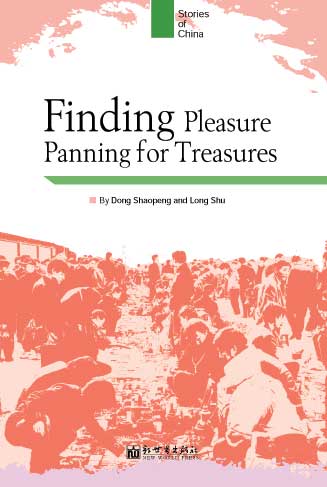
Excerpt 1| Excerpt 2 | Excerpt 3 | Excerpt 4
Authors: Dong Shaopeng and Long Shu
Publisher: New World Press (2008)
Language: English
Price: 19.80 yuan
ISBN: 978-7-80228-996-3
With China's rapid economic development, cultural consumption among China's urban and rural residents is increase. In large- and medium-sized cities, various collectors' markets have already appeared. A great upsurge in collecting is evident throughout China, with more than 70 million people getting involved.
According to information provided by the Eighth National High-Level Forum of Civil Culture of Collection held in September 2008, more and more groups of collectors are being established, and the number of artifacts and works of art collected is in the hundreds of millions. As people's awareness of collection has improved, their enthusiasm for collection has developed; cultural relics and artworks are being more effectively preserved. These works of art include ancient ceramics, paintings and jade, coins, literature and collections of items from the Cultural Revolution period. Today, many rare works are protected thanks to large investment from many Chinese businesspeople.
According to experts, due to the effect of market mechanisms, a large number of collections in various parts of China gave birth to various kinds of exchange platforms such as flea markets, antique markets, the auction industry, and the media. In addition, various collectors' organizations were established in the 31 provinces, municipalities and autonomous regions on the Chinese mainland.
Chinese people's interest in collecting reflects a desire for cultural consumption after becoming better off, but it has more to do with China's 5000-year-old civilization. In China's history, wars broke out frequently, and many ethnic groups migrated and integrated over a long period. Although well-known relics such as the Serials Bells, Jade Garments Sewn with Gold Thread, Simuwu Ancient Sacral Square Ding, Four-Sheep Square Zun have been preserved, many other cultural relics were scattered, lost or neglected.
These ancient utensils, today's cultural relics, are like lengths of continuous thread coupling with each other. Travelling through time and space, they carry on a dialogue with the people of the present age, weaving one extraordinary story after another.
A saying goes like this, store gold in troubled times, and collect treasures in a prosperous era. The new round of collection emerged with the continuous and rapid development of China's economy in recent decades. More and more ordinary people are participating in it, finding pleasure in panning for treasures, and are becoming infatuated with it.
(China.org.cn December 3, 2008)